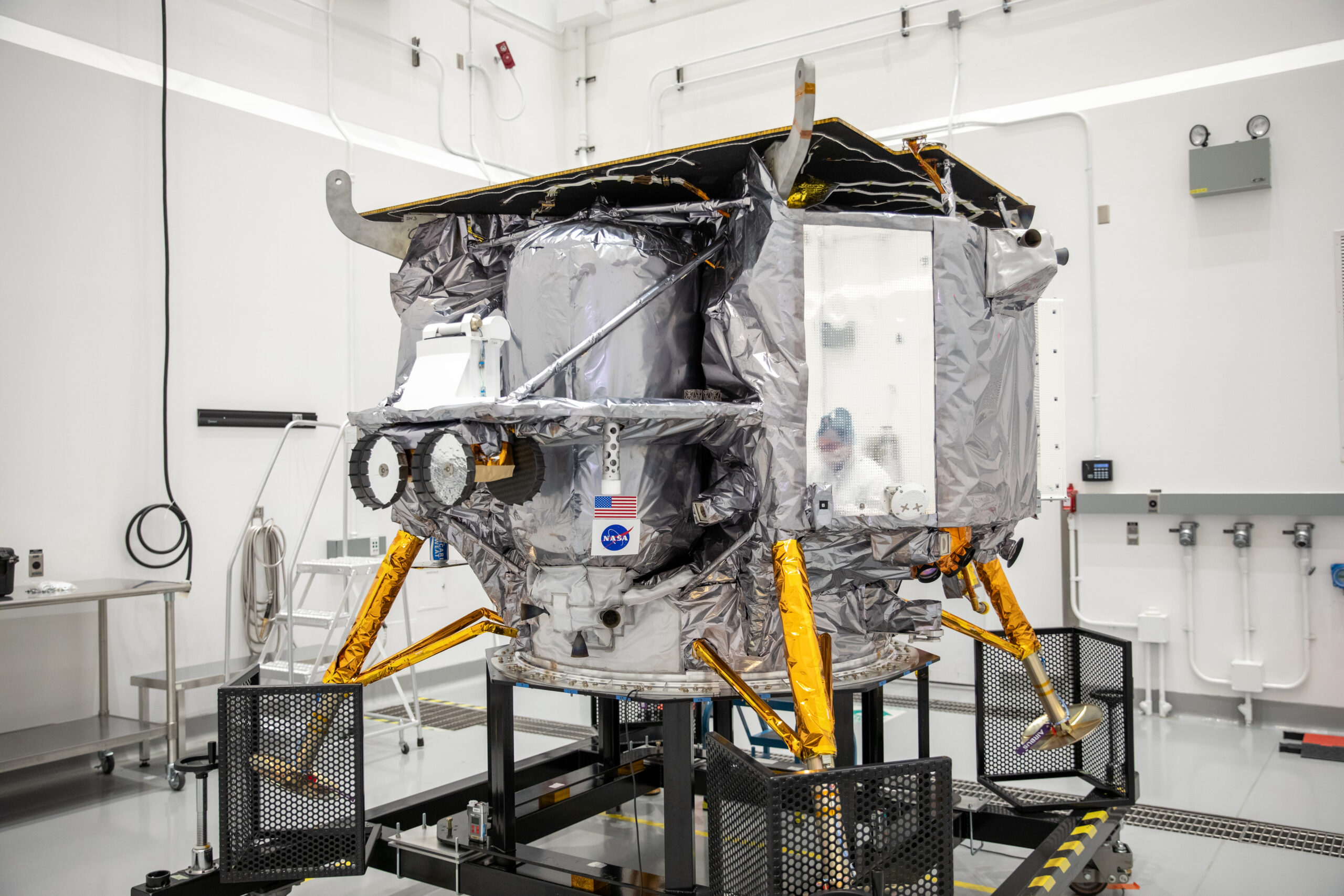
Teams have installed the NASA meatball logo onboard Astrobotic’s Peregrine lunar lander as part of NASA’s CLPS (Commercial Lunar Payload Services) initiative and Artemis program ahead of its upcoming launch on Dec. 24 from Launch Complex 41 at Cape Canaveral Space Force Station in Florida.
Peregrine will carry NASA payloads to a mare – an ancient hardened lava flow – outside of the Gruithuisen Domes, a geologic enigma along the mare/highlands boundary on the northeast border of Oceanus Procellarum, or Ocean of Storms, the largest dark spot on the Moon. The payloads will investigate the lunar exosphere, thermal properties of the lunar regolith, hydrogen abundances in the soil at the landing site, magnetic fields, and conduct radiation environment monitoring.
After arriving on Oct. 30 at the Astrotech Space Operations Facility near the agency’s Kennedy Space Center in Florida, teams with Astrobotic and ULA (United Launch Alliance) are finishing final preparations before they integrate Peregrine with ULA’s Vulcan rocket.
While NASA is the primary customer purchasing lunar delivery services, CLPS vendors also work with other customers to send non-NASA payloads to the Moon. CLPS providers are responsible for managing their activities to ensure they are compliant with NASA schedule requirements. Astrobotic will keep the agency informed of the launch date, lunar landing date, and duration of lunar surface operations, as well as provide updates on the temperature the payloads will experience during transit to the Moon and at the lunar South Pole.
A successful landing will help prove the CLPS model for commercial payload deliveries to the lunar surface. As a CLPS customer, NASA is investing in lower-cost methods of regular Moon deliveries and aims to be one many customers onboard CLPS flights. The robotic deliveries will help deliver agency science and technology demonstrations to the Moon for the benefit of all.
Learn more about CLPS activities by following the Artemis blog, @NASAMoon and @NASAArtemis on Twitter, as well as the NASA Moon Facebook and Artemis Instagram accounts.
